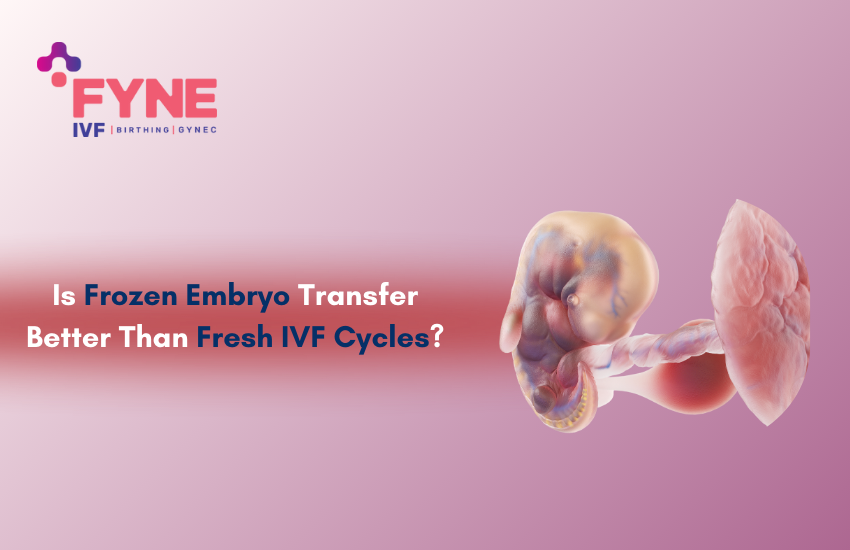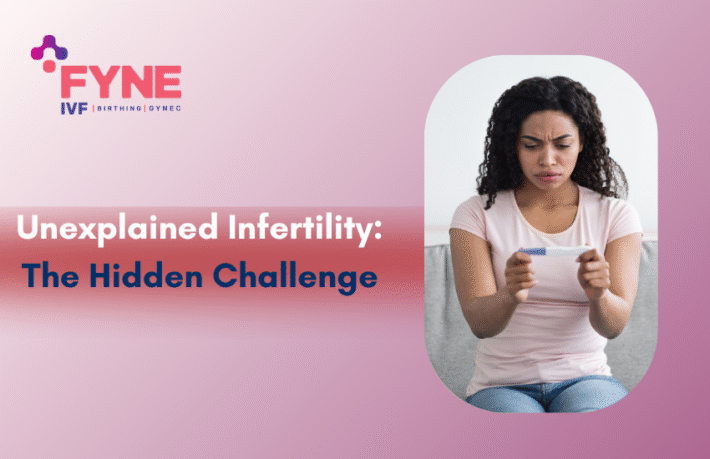Is Frozen Embryo Transfer Better Than Fresh IVF Cycles?

When considering IVF treatment, one common question patients ask is whether a frozen embryo transfer (FET) is better than a fresh embryo transfer. With advancements in fertility treatments, both approaches are widely used, but choosing the right one can make a significant difference in outcomes depending on your individual situation. In this blog, we’ll explain the difference between the two, compare their processes, success rates, pros and cons, and help you understand which option might be best for you.
What Is the Difference Between Fresh and Frozen Embryo Transfers?
Both fresh and frozen embryo transfers are part of in vitro fertilisation (IVF), where eggs are fertilised outside the body to form embryos. The main difference lies in when the embryo is transferred to the uterus.
- Fresh Embryo Transfer: After egg retrieval and fertilisation, the embryo is transferred to the uterus within 3 to 5 days, during the same cycle.
- Frozen Embryo Transfer (FET): The embryos are frozen (cryopreserved) and stored. The transfer takes place in a later menstrual cycle, once the uterus is optimally prepared.
Each method has its benefits, and the right choice relies on your body’s hormonal response, medical history, and fertility goals.
FET vs. Fresh IVF: The Process Step by Step
Let’s break down the steps involved in each:
Fresh Embryo Transfer:
- Ovarian stimulation using hormones
- Egg retrieval
- Fertilisation of eggs in the lab
- Embryo transfer within 3–5 days
- Pregnancy test after two weeks
Frozen Embryo Transfer (FET):
- Ovarian stimulation and egg retrieval (initial IVF cycle)
- Embryo freezing
- Uterine lining preparation (in a future cycle)
- Thawing and transferring the embryo
- Pregnancy test after two weeks
With FET, your body has time to return to its natural hormonal state, which can lead to better embryo implantation conditions for some patients.
Are Success Rates Higher with Frozen Embryo Transfers?
In recent years, several studies have shown that FET can offer equal or even higher success rates compared to fresh embryo transfers. Benefits observed with FET include:
- Improved implantation rates due to better endometrial receptivity
- Reduced risk of complications like Ovarian Hyperstimulation Syndrome (OHSS)
- Higher live birth rates in women with PCOS or hormone sensitivity
However, results can vary based on age, embryo quality, and other medical conditions. A personalised approach is always key.
Pros and Cons of Frozen vs Fresh Embryo Transfers
Let’s look at the advantages and considerations of both options.
Advantages of Frozen Embryo Transfer:
- More time for the uterus to recover from stimulation drugs
- Lower risk of OHSS
- Flexible scheduling for patients and doctors
- Higher success in women with certain hormonal issues
Advantages of Fresh Embryo Transfer:
- Faster IVF process, no need to wait for another cycle
- Less expensive (no freezing or storage costs)
- Preferred for some younger women with healthy hormone profiles
Things to Consider:
- FET involves additional preparation and cost for freezing and thawing
- Fresh transfers may not be ideal if hormone levels are too high after stimulation
- Emotional stress can be higher with back-to-back IVF and transfer in fresh cycles
Who Should Consider a Frozen Embryo Transfer?
FET is often a better option for:
- Women with polycystic ovary syndrome (PCOS)
- Patients with high estrogen levels or poor uterine lining during the IVF cycle
- Couples who want to genetically test embryos before transfer
- Individuals seeking to delay pregnancy after egg retrieval
Fresh transfer may still be suitable for women with the following:
- Normal hormone levels
- Younger age and high-quality embryos
- A strong response to stimulation without OHSS risk
The Bottom Line
So, is frozen embryo transfer better than a fresh IVF cycle? The answer depends on your body, health history, and goals. FET offers promising success rates and is often recommended for patients with hormonal imbalances or previous IVF failures. On the other hand, fresh transfers can be quicker and more cost-effective for the right candidates.
Schedule Your Consultation at FYNE IVF Today!
Still unsure which option suits you best? Talk to our fertility experts at Fyne IVF. We’ll evaluate your case and design a personalised treatment plan that gives you the best chance of success. Book Your Appointment Now!
FAQs
What is the main difference between a fresh and frozen embryo transfer?
A fresh transfer uses embryos created and transferred in the same cycle, while a frozen transfer uses embryos that were created earlier and stored for future use.
Does frozen embryo transfer increase the chances of pregnancy?
For many patients especially those with hormonal imbalances, FET can improve success rates due to a more stable uterine environment.
How long do frozen embryo transfer cycles take?
Typically, 4–6 weeks, including uterine lining preparation, embryo thawing, and the transfer process.
Is FET more expensive than fresh embryo transfer?
FET may involve additional costs for freezing, storage, and thawing, but may be more cost-effective in the long run due to higher success in certain cases.
Can anyone choose a frozen embryo transfer over a fresh one?
While many patients are eligible, your fertility doctor will evaluate your hormone levels, age, and medical history to recommend the best option.


